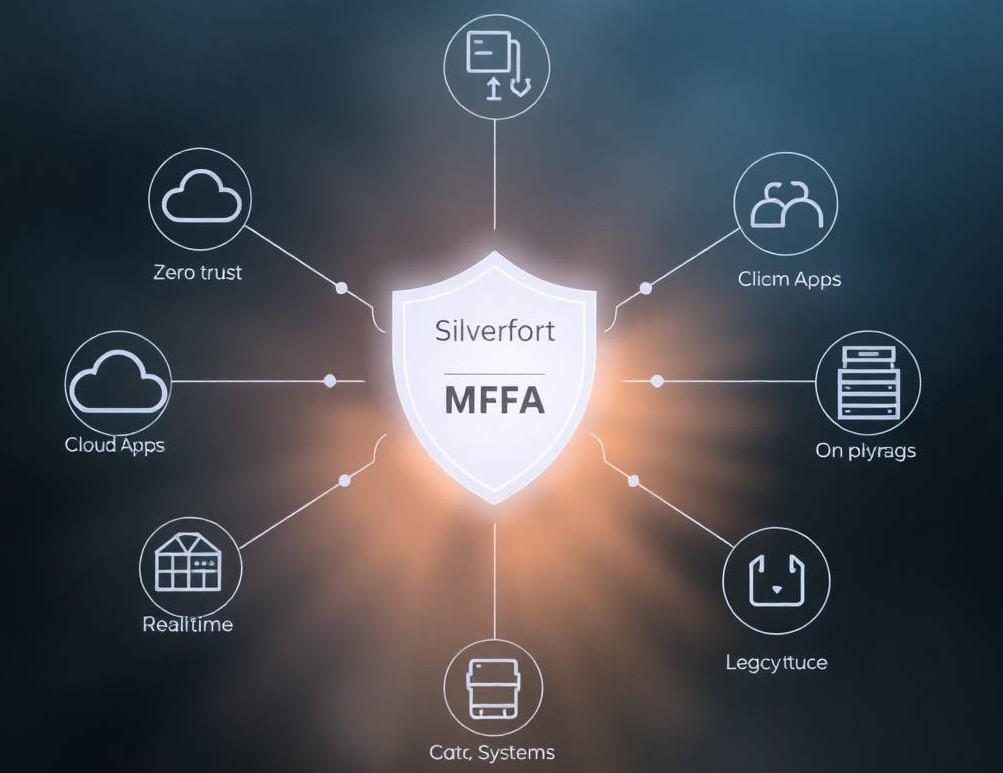Are you struggling to get cyber insurance? Silverfort helps you qualify fast, lower premiums, and meet 2025 requirements with no complex setup needed.
Cyber threats and the costs of recovering from them are growing fast. Businesses today face real financial and legal risks from ransomware to identity-based attacks. That’s why cyber insurance coverage is no longer a “nice-to-have”—it’s a must. But getting approved isn’t easy. Insurers now require strong security controls, especially identity protection and multi-factor authentication (MFA). That’s where Silverfort stands out. Its robust access control and MFA coverage for legacy systems help meet strict cyber insurance requirements, giving you the confidence and compliance needed to qualify for better protection.
Understanding Modern Cyber Insurance Requirements
Getting cyber insurance coverage in 2025 isn’t as simple as filling out a form. Today’s insurers are more cautious and stricter. Why? Because the number of cyber attacks, especially those involving identity-based threats and ransomware, has skyrocketed. As a result, they want proof that your company has solid cybersecurity controls before offering a policy.
Most insurers now require strong multi-factor authentication (MFA), identity threat detection, access control policies, and detailed audit logs. They may also ask about your ability to secure legacy systems, apply zero trust security, and monitor user behaviour in real time.
Companies that can’t meet these standards risk higher premiums—or worse, getting denied coverage altogether. Tools like Silverfort, which offer agentless MFA and identity protection across all systems, are becoming important. They help bridge the gap between what insurers expect and what most businesses have today.
The Silverfort Advantage: How It Supports Compliance

Insurers want more than basic protection—they want identity-first security. That’s where Silverfort shines. Its agentless MFA works across cloud apps, on-prem servers, and even legacy systems that don’t support modern security—there’s no need to rip and replace.
Silverfort enforces zero trust access by verifying every login attempt, no matter where it comes from. It watches user behaviour in real time, helping you stop threats before they spread. This aligns perfectly with rising cyber insurance compliance standards.
More importantly, Silverfort provides detailed logs and compliance reports insurers can use. If you’re applying for cyber liability insurance, this level of visibility makes a big difference—and can help you qualify faster.
Insurance-Driven Cybersecurity: Features That Matter Most
Insurance providers care about more than just basic security. They want to see identity threat detection, MFA on legacy systems, and real-time access control. Silverfort delivers all of this, plus detailed audit logs and zero trust policy enforcement. These features help prove your business is serious about cybersecurity. If you’re wondering how to meet cyber insurance requirements, Silverfort gives you the tools and evidence insurers need to offer better coverage—and possibly lower your premiums.
New for 2025: Insurers Demand Proof of Identity-Centric Controls
In 2025, cyber insurance providers are raising the bar. It’s no longer enough to have firewalls and antivirus software. Insurers now want proof of identity-centric controls—security measures that protect users, accounts, and access at every level.
That means showing how you manage critical system access, applying multi-factor authentication (MFA) to legacy and cloud environments, and detecting identity-based threats before they escalate. Without these, your insurance application may be denied, or your premiums could skyrocket.
This is where Silverfort comes in. It delivers agentless MFA, adaptive access policies, and real-time threat detection, even for systems that couldn’t be secured. Plus, it aligns with leading compliance frameworks like NIST, SOC 2, and ISO 27001, making it easier to pass insurer audits.
Insurers now view identity as the new perimeter, and Silverfort is built to protect it. Proving that your identity controls are in place is no longer optional if you want to qualify for cyber insurance faster and with better terms. Silverfort helps you get there with confidence.
Free Cyber Insurance Assessment by Silverfort
Applying for cyber insurance coverage can be stressful, especially if you are unsure if your current security setup meets the latest requirements. To help, Silverfort offers a free cyber insurance readiness assessment—a simple way to see where you stand.
This assessment reviews your existing identity protection, MFA deployment, access control policies, and how well your systems align with insurance standards. It checks for coverage gaps in your policy. This free assessment is a decisive first step for businesses trying to reduce risk, get better coverage, or lower premiums: legacy infrastructure, cloud apps, and remote access tools—places where many companies fall short.
The results are clear, actionable, and designed to help you qualify for cyber insurance faster. You’ll understand precisely what insurers seek and how Silverfort’s platform helps close the gaps. It also gives you a compliance report you can share with your insurer or broker.
This free assessment is a decisive first step for businesses trying to reduce risk, get better coverage, or lower premiums. It’s not just about meeting requirements—it’s about showing insurers you’re serious about protecting your digital identity.
How Silverfort Lowers Cyber Insurance Premiums
Did you know that strong identity security can help lower your cyber insurance premiums? Insurers often adjust rates based on how well you protect your systems, and Silverfort gives them confidence in your defences.
By using agentless MFA, real-time access control, and identity threat detection, Silverfort reduces your risk of a breach. That means fewer claims and less exposure for insurers. In return, many providers are willing to offer better coverage or lower costs.
Silverfort also helps you avoid policy exclusions. For example, many policies won’t cover attacks on legacy systems without MFA. Since Silverfort can protect those systems without agents or code changes, you’re far more likely to qualify for full coverage.
Even better, Silverfort provides auditable reports and compliance documentation that insurers love. This transparency makes it easier to negotiate with underwriters and avoid unnecessary surcharges.
Use Case: Small Business vs. Enterprise Cyber Insurance Readiness
Cyber insurance readiness differs between small businesses and large enterprises, but Silverfort easily supports both.
Small businesses often struggle with limited IT resources and outdated systems. Many don’t have an MFA in place or can’t secure older infrastructure. Silverfort solves this by offering agentless MFA that works on legacy systems, remote desktops, and local servers without complex upgrades. This helps small businesses meet key cyber insurance requirements quickly and affordably.
Enterprises, on the other hand, deal with complex, hybrid environments—cloud apps, on-prem systems, and multiple user types. To qualify for broader coverage, they often need real-time access controls, zero-trust enforcement, and centralised identity threat detection. Silverfort unifies all this under one platform, offering full visibility and compliance reporting for underwriters.
Both business types benefit from Silverfort’s identity-centric security because it fills the gaps insurers care most about. Whether you’re looking for basic cyber liability insurance or trying to secure a high-value policy, Silverfort makes the process faster, easier, and more likely to succeed.
FAQs
Q1: Does Silverfort meet MFA requirements for cyber insurance?
Yes. Silverfort’s agentless MFA covers cloud, on-prem, and legacy systems, which many insurers specifically ask about. It helps you meet even the strictest cyber insurance requirements.
Q2: How does Silverfort help qualify for cyber insurance faster?
Silverfort provides identity-based threat protection, real-time access control, and compliance-ready audit logs. These features make it easier to complete risk assessments and submit the right documents to your insurer.
Q3: Can I lower my cyber insurance premiums with Silverfort?
Absolutely. Strong identity protection and zero trust access enforcement reduce your overall risk profile, which can lead to better cyber insurance coverage at lower premiums.
Q4: Do all insurance providers accept Silverfort?
While every insurer has different standards, many recognise Silverfort’s controls aligning with top frameworks like NIST and ISO 27001, making getting approval easier.

